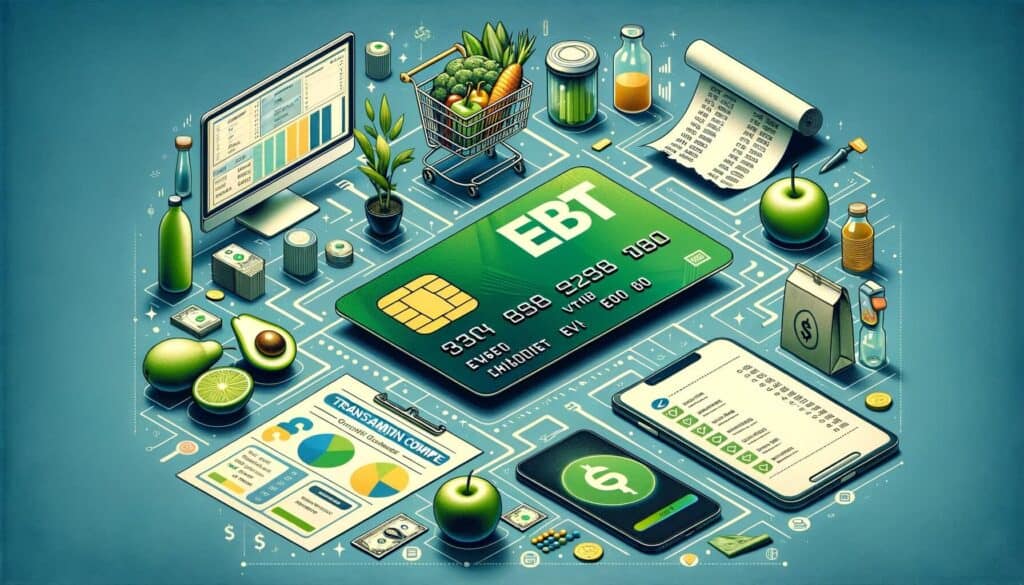
By admin April 16, 2025
In today’s digital age, accepting Electronic Benefit Transfer (EBT) payments has become increasingly important for businesses. EBT is a government program that provides eligible individuals with funds to purchase essential items such as groceries and household goods. As of 2025, the number of people relying on EBT payments has significantly increased, making it crucial for businesses to adapt and accept this form of payment.
This comprehensive guide will walk you through the process of accepting EBT payments, from understanding the basics to implementing the necessary systems and complying with regulations.
Understanding EBT Payments: What You Need to Know

EBT payments are a form of electronic payment that allows eligible individuals to access their benefits through a card similar to a debit or credit card. These benefits are typically provided by government assistance programs such as the Supplemental Nutrition Assistance Program (SNAP) or Temporary Assistance for Needy Families (TANF). By accepting EBT payments, businesses can tap into a significant customer base and increase their revenue.
To accept EBT payments, businesses must first apply for EBT approval. This process involves meeting certain criteria and obtaining the necessary certifications. Let’s delve into the step-by-step guide on how to apply for EBT approval.
Step-by-Step Guide: How to Apply for EBT Approval

1. Determine eligibility: Before applying for EBT approval, ensure that your business qualifies to accept EBT payments. Eligibility criteria may vary depending on your location and the type of business you operate.
2. Contact the appropriate agency: Reach out to the agency responsible for administering EBT payments in your area. This could be a state agency or a designated third-party processor. They will provide you with the necessary information and guide you through the application process.
3. Complete the application: Fill out the application form provided by the agency. Be prepared to provide detailed information about your business, including its legal structure, location, and the types of products or services you offer.
4. Obtain necessary certifications: Depending on your business type, you may need to obtain specific certifications, such as a food handler’s permit or a liquor license. Ensure that you have all the required certifications before submitting your application.
5. Submit the application: Once you have completed the application and gathered all the necessary documents, submit them to the agency for review. Be prepared for a waiting period as the agency evaluates your application.
6. Training and testing: If your application is approved, you may be required to undergo training and testing to ensure that you understand the EBT payment process and can handle transactions accurately.
7. Equipment and software setup: After completing the necessary training, you will need to set up the appropriate equipment and software to accept EBT payments. This includes obtaining a point of sale (POS) system that is compatible with EBT transactions.
8. Test transactions: Before officially accepting EBT payments from customers, conduct test transactions to ensure that your equipment and software are functioning correctly. This will help you identify and resolve any issues before going live.
9. Display EBT acceptance signage: Once you are ready to accept EBT payments, prominently display signage indicating that your business accepts EBT. This will help customers identify your establishment as EBT-friendly.
10. Stay updated: As EBT regulations and requirements may change over time, it is essential to stay informed and updated on any updates or modifications. Regularly check with the agency responsible for EBT payments to ensure compliance.
Setting Up Your Business to Accept EBT Payments

Once you have obtained EBT approval, it is crucial to set up your business to accept EBT payments seamlessly. This involves selecting the right EBT payment processor, integrating EBT payments into your POS system, and ensuring compliance with regulations.
Choosing the Right EBT Payment Processor: Factors to Consider
Selecting the right EBT payment processor is crucial for a smooth and efficient payment process. Consider the following factors when choosing a processor:
1. Compatibility: Ensure that the processor you choose is compatible with your POS system and can seamlessly integrate with your existing infrastructure.
2. Security: Look for a processor that prioritizes data security and offers robust encryption and fraud prevention measures to protect both your business and your customers.
3. Cost: Compare the fees and pricing structures of different processors to find one that aligns with your budget and offers competitive rates.
4. Customer support: Opt for a processor that provides reliable customer support, as you may encounter technical issues or have questions that require prompt assistance.
5. Additional features: Some processors offer additional features such as inventory management, reporting tools, and loyalty programs. Consider these features to enhance your overall business operations.
Integrating EBT Payments into Your Point of Sale System
Integrating EBT payments into your POS system is essential for a seamless transaction process. Follow these steps to integrate EBT payments effectively:
1. Update your POS system: Ensure that your POS system is up to date and compatible with EBT transactions. If necessary, contact your POS provider to inquire about any required updates or software installations.
2. Train your staff: Provide comprehensive training to your staff on how to process EBT payments using the integrated POS system. This will ensure that they are well-equipped to handle EBT transactions accurately and efficiently.
3. Test the integration: Conduct test transactions to ensure that the integration between your POS system and the EBT payment processor is functioning correctly. This will help identify any issues that need to be addressed before accepting live transactions.
Ensuring Compliance: Understanding EBT Regulations and Requirements

To accept EBT payments, businesses must comply with specific regulations and requirements. Familiarize yourself with the following key aspects of EBT compliance:
1. Eligible items: Understand the list of eligible items that can be purchased using EBT funds. This typically includes essential food items but may vary depending on the program and location.
2. Transaction limits: Be aware of any transaction limits imposed by the EBT program. This includes maximum purchase amounts per transaction or per day.
3. Prohibited items: Familiarize yourself with the list of prohibited items that cannot be purchased using EBT funds. This may include alcohol, tobacco, and non-essential items.
4. Record-keeping: Maintain accurate records of EBT transactions, including receipts and transaction details. This will help you stay organized and comply with reporting requirements.
Promoting Your Business as EBT-Friendly: Marketing Strategies
Once your business is set up to accept EBT payments, it is essential to promote your EBT-friendly status to attract customers. Consider the following marketing strategies:
1. Signage and displays: Display clear and visible signage indicating that your business accepts EBT payments. Place these signs near the entrance, at the checkout counter, and in other prominent areas.
2. Online presence: Update your website and social media profiles to highlight that you accept EBT payments. Include this information in your business description and posts to reach a wider audience.
3. Collaborate with local agencies: Partner with local government agencies or community organizations to promote your business as EBT-friendly. This can include participating in community events or distributing informational materials.
4. Offer promotions and discounts: Attract EBT customers by offering exclusive promotions or discounts. This can help incentivize their patronage and build customer loyalty.
Troubleshooting Common Issues with EBT Payments
While accepting EBT payments can be beneficial for your business, it is essential to be prepared for common issues that may arise. Here are some troubleshooting tips for common EBT payment issues:
1. Connectivity issues: If you experience connectivity issues with your POS system or EBT payment processor, ensure that your internet connection is stable. Consider having a backup connection or alternative payment methods available.
2. Card balance discrepancies: Occasionally, customers may have discrepancies in their EBT card balance. In such cases, politely inform the customer and suggest alternative payment methods or ask them to contact their EBT provider for clarification.
3. Expired or damaged cards: If a customer presents an expired or damaged EBT card, politely inform them of the issue and suggest alternative payment methods. Encourage them to contact their EBT provider to obtain a replacement card.
FAQs
Q1. Can all businesses accept EBT payments?
Answer: Not all businesses are eligible to accept EBT payments. Eligibility criteria vary depending on the location and the type of business. Contact the agency responsible for EBT payments in your area to determine your eligibility.
Q2. How long does it take to get EBT approval?
Answer: The time it takes to obtain EBT approval can vary. It may take several weeks for your application to be reviewed and processed. Be prepared for a waiting period and follow up with the agency if necessary.
Q3. Can I accept EBT payments online?
Answer: As of 2025, EBT payments are primarily accepted in physical stores. However, some states are exploring the possibility of allowing online EBT payments. Stay updated with the latest regulations in your area.
Conclusion
Accepting EBT payments in 2025 is crucial for businesses looking to tap into a growing customer base and increase revenue. By understanding the basics of EBT payments, applying for EBT approval, setting up your business, choosing the right payment processor, integrating EBT payments into your POS system, ensuring compliance, and promoting your business as EBT-friendly, you can successfully accept EBT payments and provide a seamless experience for your customers. Stay informed, adapt to changing regulations, and embrace the opportunities that accepting EBT payments can bring to your business.